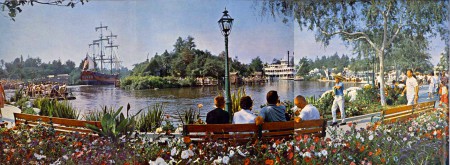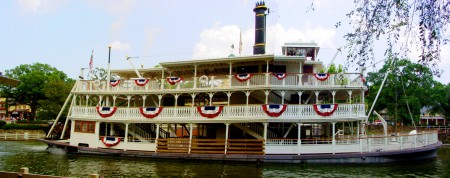The View from Here
I gave a talk about the narrative design of Disneyland at the Cusp conference a couple of years ago. I covered the idea of a cinematic experience and viewer participation. The visual landscape of both Disneyland and Walt Disney World is carefully planned to create an experience like a film. For example, the tunnels on either side of the Main Street train station act like the darkening of a theater, then the guest passes onto Main Street and the “film” begins. But, the viewpoint is not straight down Main Street toward the castle. It’s to the right or left, then as the guest moves into the park, the view is revealed. The castle acts as a draw, or in Disney terms, a “weenie” and the guest is pulled toward the center of the park.
Each vista is planned to serve as a setting, information delivery vehicle, navigation device, and entertainment. At the same time, the overall sense of security and familiarity is created. Think of the experience this way: there are long shots of a Panavision nature, medium shots of singular buildings, close-ups of pedestrian level windows and doors, and detail shots of individual elements such as a birdcage on a porch or old apothecary bottles in a window.
While others are taking photos of their friends or family members in front of Sleeping Beauty Castle, I’m shooting the long shots and details. I’ve found shooting panoramas by standing in one spot and rotating 360 degrees, or moving down the street and taking a picture every twenty feet to work well. Of course it looks crazy, but so what?
As a side note, once again, bring your subject close and let the castle be a background. Unless you need to shoot their entire outfit with shoes, we don’t need to see their entire body. There is no need to be upset when people walk between you and the subject 50 feet away. If I see you do this I will purposely walk between you and the subject and stand there.

















